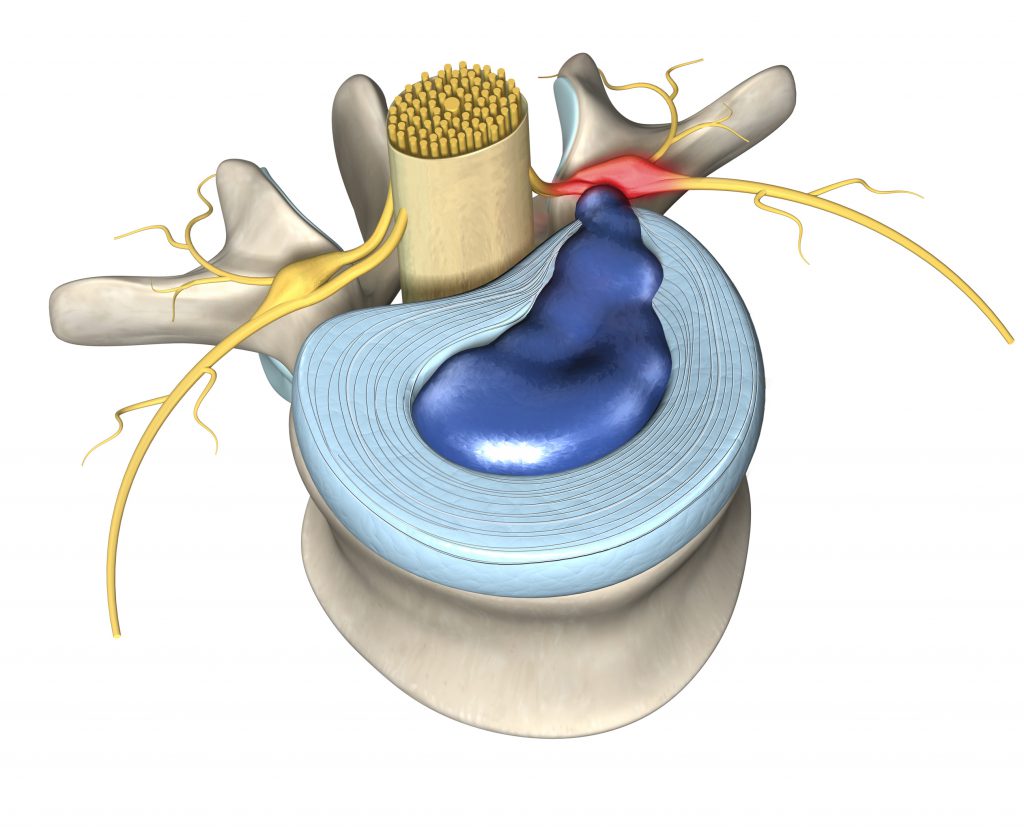
Annular tears are a common, degenerative condition that can develop in the spine naturally as you age or through external factors such as an injury or abnormal stress on the spine. An annular tear is formed when the normally thick outer layer of a disc is ripped or torn as a result of stress. After an annular tear is formed, additional stress on the disc can cause the soft inner “jelly” (nucleus pulposus) to leak out from the interior of the disc forming what is known as a Herniated Disc. If this leakage happens on the rear side of the disc, the nucleus pulposus can press against the nearby nerve roots resulting in what is commonly referred to as a “pinched nerve”.

Annular tears can be formed in a variety of ways. The most common way annular tears are formed is through normal activity as part of the natural aging process. They can also form as the result of an injury that places an abnormal amount of stress on the disc and spine. The majority of annular tears are asymptomatic and are able to heal on their own without medical intervention, but on rare occasions an annular tear may not be able to properly heal and a medical intervention such as minimally invasive spine surgery may be required.
Annular tears are typically classified into one of three categories.
Annular tears can cause a variety of symptoms that may intensify if the tear progresses to herniated disc. Common symptoms include:
A physical exam performed by an experienced spine physician is the best way to diagnose an annular tear. As part of this physical exam, your physician may order additional diagnostic imaging such as an MRI or CT Scan to confirm the presence of an annular tear and to help advise you on what treatment options are available.
Annular tears can be treated in a variety of ways depending on the severity of the tear and your symptoms. Some common treatment options include:
Preventing annular tears involves maintaining a healthy lifestyle and taking proactive measures to protect your spine:
If you suspect you may have an annular tear or are suffering from back or neck pain, our team of physicians at Total Spine and Orthopedics specialize in diagnosing the root cause of your pain in order to develop a personalized treatment plan so you can get back to living life to the fullest. If you’d like to know more or are ready to book your first appointment, simply fill out the form below and a member of our team will reach out to get you scheduled!

Melbourne: 709 S Harbor City Blvd, Ste 110, Melbourne, FL 32901
Orlando: 9145 Narcoossee Rd, Ste A200, Orlando FL 32827
Titusville: 494 N Washington Ave, Titusville, FL 32796
Our Hours: Monday - Friday 8:00 AM to 5:00 PM
Copyright © Total Spine and Orthopedics - Icons From FlatIcon